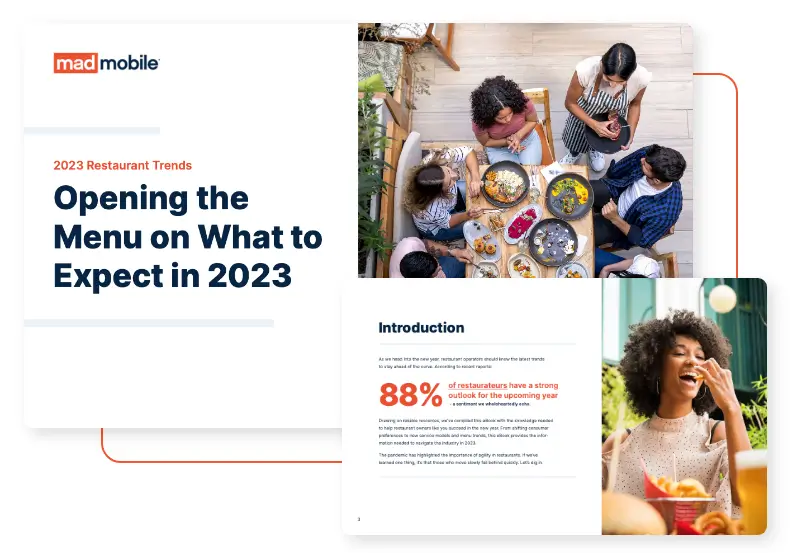Understanding the different generational eating habits and trends can give restaurateurs a major edge in the market. With evolving technologies and lifestyles, food preferences vary significantly between generations.
Taking the time to consider how age affects eating habits and tailoring a restaurant’s offerings to suit this can help give any business the competitive edge it needs in today’s bustling food scene, from generations that expect traditional dining to newer generations that want a unique experience.
As a result of these preferences, restaurant owners should consider adapting menus and marketing strategies to capture a bigger share of the consumer market. Below we will take a look at generational eating habits and dining preferences.
- Traditionalists (Born before 1946) – take pleasure in keeping their eating and dining habits classic, preferring recipes passed down through generations. A familial connection makes mealtimes even more special.
- Baby Boomers (Born 1946-1964) – strive for a nutritionally balanced lifestyle while also being eager to explore the ever-expanding array of dining options.
- Generation X (Born 1965-1980) – prefers simplicity when it comes to eating and dining, opting for a relaxed atmosphere rather than an over-the-top luxury. Prefer a speedy and convenient meal.
- Millennials (Born 1981-1996) – emphasize sustainability packaging; 94% of millennials say they would likely order an expanded variety of to-go foods if there were improved packaging to maintain food temperatures, taste, and quality.
- Generation Z (1997-2012) – is into anything and everything “virtual”; 69% reporting they would likely order through voice-enabled platforms like Amazon Alexa or iPhone’s Siri.
Traditionalists
With old-fashioned values for family traditions, the traditionalist generation strives to maintain classic at-home eating where memories are created at the dinner table. These individuals take great pride in creating dishes passed down in family recipes, evoking feelings of nostalgia and familiarity. In addition to cooking traditional meals, they put an emphasis on using locally grown produce to get the best flavor and highest quality of dishes.
As their name implies, traditionalists continue to focus on all things traditional, even when outside of their homes. When eating out, they prefer family-style restaurants because it provides an atmosphere that is familiar and celebrates their values. These restaurants typically include classic menu items like chicken and mashed potatoes, limiting exposure to ethnic cuisines. Another aspect they take into consideration when dining out is price. They’ve always strived to make the most out of their limited resources, so carefully reviewing price and quantity is a priority.
Baby Boomers
The largest generational group in U.S. history is the baby boomers. Their name derives from the “boom” in birth after soldiers’ return from WWII. Today, they all agree on the great importance of personal care and taking care of their health and well-being. Baby boomers are accustomed to restaurant dining. They consider themselves self-adventurous eaters, experimenting with different cuisines, with 62% reporting they usually like to try new dishes and flavors when they dine out.
Baby boomers generational eating habits consist of looking for culinary experiences to match their newfound wealth, and fine dining establishments have become an increasingly attractive option. According to a Restaurant Hospitality magazine, boomers buy an average of 193 restaurant meals a year. When dining out, they expect a convenient and speedy experience. If service is slow or disorganized, it can quickly ruin their night.
Generation X
Generation X is described as resourceful, independent, and keen on maintaining a work-life balance. Their eating habits include exhibiting an emotional connection with products consumed during their childhood and youth, aiming for comfort and convenience. They also shoot for healthy eating – plant-based specifically. About 76% of Gen Xers said that plant-based proteins are one of their top choices for the healthiest foods.
Gen Xers have a growing demand for delivery options and fast casual dining. They favor quick and informal dining options where they wouldn’t have to wait long for food or feel constricted by a formal atmosphere. About 80% of the time, Gen Xers choose quick-serve and fast-casual restaurant establishments.
Millennials
The millennial generation has witnessed technological growth and development. As a result, they are considered more progressive, creative, and far-thinking than earlier generations. This generation puts a higher priority on sustainability, especially when dining. Nearly 80% of millennials say being eco-friendly is a way to improve their quality of life. They want to see plant-based alternatives, whether in packaging or food alternatives.
Millennials are increasingly interested in social media-friendly restaurants. In fact, 30% of millennial diners will avoid restaurants with a weak Instagram presence. About 69% take photos of their food before eating. Another dining preference millennials have is fast casual dining. They want convenient pickup and delivery. Research shows that they make up 51% of fast-casual restaurant customers.
Generation Z
The generation that grew up with technology at the palms of their hands, Gen Z. With that being said, technology plays a large role in their eating habits, especially as they seek food that connects online moments. Almost 53% of Gen Zer’s meal inspiration comes from TikTok. This blend of online and real-life experiences is fueling the success of virtual dining concepts for delivery, such as DoorDash or GrubHub.
Gen Z is a unique and health-driven generation focusing on physical and mental health. Indeed, 45% of college students report it’s essential that their food comes from fresh ingredients. Another dining trend that is gaining momentum for Gen Z is meal kits. Almost 49% of young adults say meal kits are now part of their weekly grocery routine.
Conclusion
In conclusion, our eating habits are not just a matter of personal choice or preference. They are shaped by a variety of factors, including our cultural background, socioeconomic status, and family traditions. Understanding generational eating habits can help us appreciate the diversity and complexity of food cultures around the world and appreciate the important role that food plays in our lives.
For businesses looking to remain competitive in the food service industry, understanding current and emerging trends for each generation is essential. By staying up-to-date on how each generation dines, restaurants can continuously refine their menus and offerings to keep customers coming back for more.








